|
Dear Friend,
The seasons seem to flow one into the other in an organic and flexible way when you start watching the natural world up close. The changes are not as stark or clearly defined as the Gregorian calendar would lead one to believe. Climatological dating would have autumn starting on September 1st and astronomical dating would see its start around the 21st here in the northeastern United States. Yet, here I am camped out on the shore of a pond in the Catskills in mid-August and autumn has already begun to show itself. The mornings and evenings are cool, leaves are starting to change their colors, and animals are busily gathering their stores for the colder months ahead. White tail bucks are growing out their antlers and our local walnut trees have started to drop their nuts. Autumn has always been the season that I most resonate with. The other seasons have their allure, of course, like the mass greening in spring with its abundant and accelerated growth, the high heat of summer that ripens all we harvest, and the deep cold of winter with its slowed pace and introspective texture, but autumn holds more for me. Something deeply enlivening happens and my experience becomes crisper because my senses reach farther out. It is the time of year when I feel most at home in myself. Although having a raging bonfire on a cool evening under a clear star-studded sky is one of my favorite things to do, I have found that fire is only a part of this season. I’ve also discovered fire’s elemental compliment and associations. When I energetically align myself to the season of summer, I feel the direction of south, the element of fire, the mid-day sun, the full moon, and aspects of strength and vigor. When autumn starts to take hold, the shift is to the direction west, the element of water, the setting sun, the waning moon, and aspects of culmination and completion. Water is what strikes me most strongly as I shape-shift with this flowing narrative of the natural world. Lakes, rivers, ponds, streams, and reservoirs are abundant in the Catskills. Even in drought years there is water here. As I grow into this natural exchange, I become aware of how water affects and embraces me. Walking in the forest in a cold rain becomes a cleansing for the body as well as the soul. Gazing out over the broad expanse of a still lake centers me and puts me in touch with the workability of my life. Paddling along quiet rivers reminds me that I am supported. Feeling the cool damp dew on my bare feet shows me that above all else, water connects us all. The water that I drink, just like the air I breath, has passed through innumerable beings. Water makes up most of our planet as well as most of our bodies and we all share it. Water is a precious gift that supports the life of the entire natural world. I invite you to look at how, and in what ways water encourages you to be. As you move through your day ask yourself where water touches your life at a deeper level. When you drink, be reminded of the origins of what you imbibe. When you wash, be mindful of what you are returning to the watershed. When you encounter water, see it for the sacred being that it truly is. From my Heart to Yours, Christopher T. Franza OMEC/Board of Directors Dear Friend,
For the July OMEC Inspirational Essay, I'd like to share with you an excerpt from my (Jonathan Hammond) forthcoming book: Re-Wilding: A Shaman / Witch’s Guide Our mythos, our truest and most purposeful story, our organic wildness, will reveal itself through our attunement with Nature, and if we merge our minds with the underlying energy of Nature held within a seed, we can start to identify a similar guiding intentionality within us that has always been there, and that if followed, will reveal the story that the Earth wants us to tell. A cornerstone magical practice of the shaman is called shapeshifting. Shapeshifting is a simple imaginative process in which we intuitively and empathically assume the form of a person or object to receive its influence or its power. When we shapeshift into something, we create a deep psychic identification with another being that awakens within us our own “version” of that being’s genius. Shapeshifting is a powerful practice, and we are doing it all the time, because whenever we manifest something (i.e., create magic), we are making a deliberate self-identification with the very thing that we create. If you want to move to Hawaii, you become the person who would do just that, if you want to attract love you become love, if you want to stop smoking you become smoke-free, and if you want to re-wild yourself you become Nature to find how Nature stirs within you. So, in your mind’s eye, picture a seed that has just been planted, and project onto it a human psychology. Imagine this seed is quite a bit like you, it approaches life in much the same way as you do, it has likes and dislikes, fears, desires, and dreams. Empathize with the seed, merge your mind with its form and energy, imagine the inner life of this being as the inward workings of its outward story. When a seed is planted in the ground, its first action is to split open and send roots into the earth. It doesn’t reach outward to find its identity, it grounds into its inherent belongingness, and assumes an identity of absolute perfection by being just as it is, from the get-go, the seed knows that this is its world. Underneath and surrounding the seed is a vast community of support and nourishment, an intricate web of life that collectively supports and feeds the seed to become what it is meant to become and to fulfill its role as a vital and life-giving part of the whole. Within the seed is an evolutionary programming that beckons it toward life and to all that is life-affirming. Through the seed’s felt sense, it makes choices in every given moment and circumstance that move it toward its highest potential. There is a single pointed directionality within the seed to unceasingly create itself beyond its current form. Whatever the circumstance, whether a beautiful summer day or an encounter with a tsunami, thunderstorm, or predator, the seed will do its best to find safety, to avoid danger, and to take from the earth what it needs to blossom and to thrive. The seed’s journey into flowering is fueled by a robust self-esteem. The seed/plant denies itself nothing, it gets its needs met however it can, it does not apologize for its existence, it has no understanding of self-sabotage or martyrdom, it will compete with others when appropriate, it maintains its boundaries and defenses, and it is singularly uninterested in anything that is not directly in service to it. This is not an inflated self-esteem; it is a self-esteem necessary to hold the seed/plant’s importance as a precious and indispensable being whose existence benefits the entire universe. The seed/plant’s need for sunlight is a symbol of its yearning to fulfill its spiritual purpose. The sun’s light as its food reveals the importance of its sacred objective to give its gifts to serve all of life: food, oxygen, energy, fire, sources of water, housing, shade, and beauty. Through living the hidden story that its instinctual nature dictates, the seed/plant is alive and real, it gives of its gifts, and it will die, decay, and become mulch for further life. By shapeshifting into the seed/plant (and I invite you to do this practice on your own) you discover that you belong on this planet exactly as you are, that you have an embedded directional programming within you that can be felt, that you are to always advocate for yourself and to never betray yourself or deny your needs, that in the face of difficulty you need only do your best, that you should be unabashedly obdurate in your desire to express your true essence from which your gifts will emerge, that your spiritual purpose is in the pursuance of anything that is life-affirming, and that when appropriate, you will let yourself “die” (i.e. develop into something new) to continue to serve the life-force. From my heart to yours. For the Earth, Jonathan Hammond OMEC Board-At-Large Dear Friend,
In the Oregon Siuslaw National Forest, I came to know the American Killdeer, also known as Charadrius vociferous or plover. A small tawny bird with brown wings, white belly, and black bands across the chest and face, it chirped and flailed one wing as if broken, a performance perfected to lure predators away from the nest; a true thespian. The Killdeer had chosen its nesting ground on a gravelly path in a lush green valley with a river full of spring rain, not yet parched by summer heat, surrounded by hills and newly budding apple and willow trees. Apart from being home to the Killdeer, this spread of land is also a mighty host to all kinds of life, including ducklings, turkey vultures, a resident herd of elk, the occasional elusive wildcat, two farm dogs, 18 sheep, three horses, one kitten, and two dear human friends of mine, together tending land and flock here in the belly of the coastal forest. The aboriginal dwellers of these lands were the Siuslaw and Kalawatset peoples. Like many valleys in the Pacific Northwest, the beauty of this particular valley is sobered by clearcuts on the surrounding hills and the early morning rumble of logging trucks. While National Parks are legally protected from logging, mining, drilling, and other private company interests, National Forests are not. And so, the Siuslaw National Forest is a nexus of wild land, agriculture, and industry. The Killdeer has made a home of places like this, adapting to human influence, and hiding their precious nests in plain sight, in fields, valleys, driveways, gravel paths, and even airport strips, making them vulnerable to the many hazards of ground nesting, especially injury by vehicles and pesticides. There are no plush nests in high places for the Killdeer. It has made an art of action to distract any predators by putting itself in harm’s way to protect its young. The Killdeer paused its charade and abruptly righted itself, moving up the path at a safe distance as I followed. It finally took flight, letting out a piercing two-syllable call and disappearing behind the pink apple blossoms, the sound of its wings lost to the gurgle of the river. As I retraced my steps, I came upon a modest nest scraped into the path, lined with bits of twigs, moss, and tree bark. I may not have seen it at all if I had not happened to look directly at my feet. Despite the mist and rain, the four gray speckled eggs were completely dry, as if warm; perhaps recently incubated by the warm underbelly of the plover. Vulnerable but protected. ~ To teach love and appreciation for nature is to protect our beautiful planet into the future ~ From my heart to yours, Sayre Herrick OMEC Board Member …trust the place to form the voice… Susan Howe (b. 1937) American poet Dear Friend, We share with you here some beautiful art and writing from the 6-week virtual winter/spring gathering of the nature-inspired writing program, Remembering Our Place in the Sacred Circle of Life. Participants came together from Connecticut, New York, Ohio, Michigan, Indiana, Washington, California, Alaska, and Hawaii. Together, we explored how deepening our relationship with the natural world, especially through the lens of curiosity and gratitude, can inspire creativity and a new knowing. Over the weeks, we welcomed the spectrum of sensations that accompanied our personal forays in nature. We made offerings to the land, saw familiar places with new eyes, contemplated poems and essays, and recalled our timeless connection to place, Each week, we wrote together and held space for the expressions of remembering that arose, which included the depths of grief and the heights of ecstatic joy. From my heart to yours, Christina Burress Board Member, OMEC
The majestic elephant begins as a vulnerable large baby, vulnerable yes, and even delicate. Finding herself alone in the vastness she cries out, calls her mama, but there is no call back. When found and saved she needs to be comforted by blankets both physically and spiritually. Her care takers are compassionate, calming and unrushed. They except that baby has had trauma and needs them to show gentleness and mothering care. Painting & words by Bean Corcoran
No Place I'd Rather Be by Leah Naomi “There’s no place I’d rather be Than on my surfboard in the sea” Looking back at high peaks covered in lush greens Thankful for rainfall that nourishes plants and trees Surrounded by crystal clear, blue, turquoise pales Home to my friends the turtles, mantas and whales Close enough to see colorful coral reef and fish swimming Above enough not to touch sharp jagged edges, unforgiving Skin cooled by breeze and warmed by sun Patiently waiting for my wave, for the fun “There’s no place I’d rather be Than on my surfboard in the sea” * Written March 2023 after a surf session at breakwall, Lahaina, Maui, HI ** Quoted lines from Disney’s Lilo & Stitch soundtrack, Hawaiian Roller Coaster Ride song, By Kamehameha Schools Children's Chorus and Mark Kealiʻi Hoʻomalu) I’m writing this on Earth Day. It’s cool and damp where I live in the Northeast of the United States, close to the border with Canada. The weather here has been going back and forth between winter and summer, refusing to settle into anything like a typical spring. Buds appeared on trees and then stalled. I’m standing under a yellow birch, and I can feel the tree holding its breath, waiting for the right moment for a big, green exhale.
Over the past week, I have taken part in a few events inspired by Earth Day: an interfaith conference, a college sustainability committee’s lunch program, and a fundraising and outreach event with my regional wildlife rehabilitator organization. I’m a volunteer licensed to temporarily care for injured and orphaned native animals so they can heal or grow and return to their wild lives. I primarily care for turtles who’ve been hit by cars while trying to cross the road. The number of turtles is decreasing everywhere, and half of the world’s turtle species are close to extinction. Each turtle I help is a sacred individual but also part of a larger conservation challenge. The heart-centered work of wildlife rehabilitation spirals into my evolving spiritual connection with nature and informs my deep concern over the loss of biodiversity on our planet. Some of my favorite authors have beautiful ways to describe how humans experience biodiversity, the variety of life with which we share the Earth. Ecologist and philosopher David Abram calls it “utter weirdness and dark wonder.” Deborah Bird Rose, who studied Aboriginal ecological philosophy and cared for orphaned flying foxes in Australia, called it “shimmer.” Behavioral scientist Stephan Harding calls it “being Gaia’d.” It’s that feeling you get when you connect deeply with the more-than-human world. Today, Earth Day, approximately 600 species of animals, insects, and plants will go extinct. That number repeats every day. You and I probably can’t name any of them and won’t even know they are gone, but there is something deep in our sensate beings that will miss them. Contact with the weirdness, wonder, and shimmer of the natural world makes the experience of being human extraordinary. I volunteer with wildlife rescue because I am making a difference. The thing I hear the most when finders bring me animals is an apologetic, “I know it’s just a…turtle, squirrel, seagull, frog, snake, pigeon, mouse.” I assure each of them that, to me, no being is “just” anything. Each is weird and wonderful, and I am going to do my best to keep even the smallest bit of shimmer in the world. I am deeply grateful for the humans who help by taking the time to bring an animal to me or another wildlife rehabilitator for care. Looking up again at the budded branches of the yellow birch above my head, I notice that I am also holding my breath. What am I waiting for? I’m not sure. Perhaps there will be a moment when all humans realize what you and I know already – that the world is full of marvelous and miraculous beings who delight our senses and invite us to bring our strange humanness back into the web of life. That will be the moment we all take a big, green exhale. From my heart to yours, Debbie Philp OMEC Board of Directors As a child, I used to sit inside the untamed fields of Spain, surrounded by wildflowers and the deep, dry scent of piñon trees. There, I’d create a pretend church, a place of worship, in nature. I was merely eight years old, so I had no concept of churches, nor did I of ceremony. But I was calling out—like Rumi in “the moan of the dog for its master”—for a place inside nature’s intricate web.
Today, the wisdom that lies inside these concentric circles of my older self can see things more clearly: how my indigenous soul longed to come home to herself inside nature, to know she belonged and was part of a holy beauty and perfection. That field continues to be my mother, for she awakened my indigenous soul, even after homes and walls cover her skin, hiding her wildness below. In my late thirties, after losing touch with this part of myself, I was drawn to the word duende. So much so that I wrote a novel, Child of Duende: A Journey of the Spirit, inspired by this word that the Spanish poet Garcia Lorca described as the “Spirit of the Earth that one must awaken in the remotest mansions of the blood”. Isn’t that what our nature truly is…nature herself…this essence of duende that moves through us? Isn’t it nature who offers her mirror for us to see who we truly are, especially when we feel disconnected? As a teacher in the schools, I’ve seen children mirroring that same longing that I once had—to belong, to feel a sense of place and home on our earth. But far too often we seem to look for that inside structures and systems that are separate from nature. When we stand in the forest, though, and hear the birds, the scuffling sounds, and branches breaking inside the wind, we begin to find our place. We learn from the tree that does not judge itself for being crooked or from the bird who doesn’t care if it sings off key or from the ant who doesn’t hide in its smallness. Nature just is. Every being is necessary for the larger symphony called life. What if we stop seeing life through our eyes, and instead through the ever-changing eyes of water, or the humble reed grass as one of my students has done? What if we learned to see our nature through the eyes of nature? Would we find home for our indigenous souls again? I’d like to invite you to take a moment to look at nature, not as a visitor, but as a part of her. What does she see, feel, touch, sense, hear? What is her story and where do you live inside her story? We explore these questions and more in my workshop Stories from the Earth. Here is a sample of student work from last summer’s workshop. May these nature-connected moments inspire your heart on this day: A cedar leaf fell from way up in the sky, and it landed right next to reed grass. He (reed grass) thought of how high cedar leaf fell from. ‘I grow and I grow, and I grow, but I only get to be this teeny, tiny, plant. Why can’t I be like the cedars and grow so tall that my branches touch the sky, and the birds want to land on the branches, and the wind blows mightily through my pine needles? –Jill Farrant (see the storytelling video creation here: https://www.youtube.com/watch?v=AMD9jBNBMrk) In the heart of Mexico City, a little girl named Callita watched the full moon. ‘Why does the moon follow me wherever I go?’ she wondered. ‘It looks at me with its big eyes and I just rush under the canopy of houses and shelters to get rid of her’…. ‘Why are you afraid of me?’ the moon asked from the immense sky. —Claudia Zamudio Hi! Hello! Look at me! Did you see that? I wish people would look at me. I have so many things to show them. I’m not just a ball of light, you know. I hate when people stay in their little boxes when my light shines brightest. It really makes me sad… The moon always runs away from me. I just want to play with her. —Miguel Zamudio, 9 years old. From my heart to yours. For the Earth Michelle Adam, OMEC Contributor I have always been fascinated by fire. Even as a youth living in the city, I found ways to have flames be part of my experience, like regularly pilfering candles from the dining room table just so I could have a bit of living flame in my room. During my teens, my family moved to the Catskills, and it was then when fire became much more prevalent and a staple in my life.Afterall, you cannot exactly have a raging bonfire in a city park without drawing unwanted attention. With our move to the wilder places of the mountains, a fire was seen as a common part of life. As I matured into an adult, fire took on a deeper meaning for me. I often wondered what our early ancestors felt when they were first able to summon fire as opposed to gathering it off the landscape from a lightning strike or the naturally occurring wildfires that we still have today.
When I am out on the landscape and have the need for fire, I usually employ the tried-and-true method of a ferro rod and some birch bark tinder. When I want something more contemplative or ceremonial, I call fire the way that some of ancestors did by friction with a bow drill kit. Using such a kit takes some practice and patience but there is a certain focused aspect to doing it that is incredibly settling. Prepping the tinder bundle, gathering the wood of assorted sizes, and laying out the parts of the bow drill set in a respectful and intentional way turns the calling of fire into a sacred act. The parts of the drill set have each taken on their own meaning for me over time, something I have discussed in previous essays. Grandfather Fire is a magical being and considered our first ancestor. It was fire in the form of lightning that sparked life here in the arms of Pachamama, Mother Earth. I have heard it said that fire is the one element that cannot be corrupted. Water, air, and earth can all be polluted if neglected for their sacredness. Fire’s shifting ephemeral form always maintains its transformative purity. Throughout our known history, fire has played an essential role in our growth as a society. It has kept us warm, cooked our food, forged our tools, and provided us with a setting for our gatherings. Fire is also within us as the holy molecular chemistry that is our breathing, digesting, and musing. It is not a coincidence that fire came up for me this February. In my own ancestral lineage fire was a large part of a traditional ceremonial life. Bonfires were lit to celebrate the returning light and the earliest manifestations of Spring. Livestock were driven between fires to ensure their health for the coming year and the ashes of fires were inspected for good omens. One of the things that I have done for many years is to collect a bit of char from each fire that I have had or prepared for others. I grind it down to powder and keep it in a jar. I start each new fire with a little of that char so that the energy from each fire is passed along and then I offer a bit to each person that I have shared fire with so that they may take that energy and carry it forward themselves. I would like to end with an invitation. Have your own fire. Feel its warmth. Look at its light. What images or feelings emerge from the dancing flames for you? It does not have to be a big fire. There are times when a humble candle will do. What does fire mean for you? From my heart to yours, Christopher T. Franza, OMEC board of Directors The winter landscape outside my window looks bleak. I see white snow, the dull browns of dead plants, the angles of bare trees, and not much else. When I wander through it, though, the landscape reveals its bones.
A few years ago, I began a project of “rewilding” the acre of land around my house. Because I have added native plants and allowed others to grow wherever birds and breeze dropped their seeds, vegetation that provides food and shelter for wildlife is prevailing. The gardens do not look tidy, especially in fall when dead stalks stand among unraked leaves, but my non-human neighbors have little care for the aesthetics of the place. When the snow piles up, those dead stalks hold their dried seedheads above it, which allows black-capped chickadees, one of our winter birds, to dine on the seeds. Evening primrose seems to be the birds’ favorite. Chicory pokes its head through the snow and burdock’s burrs hook me when I walk by. As the stalks of these tall plants collapse, they create tangles of brush that shelter birds and other critters from the wind and snow. Mice shelter under the ground-covering wintergreen and nibble its berries. Red squirrels dine on the cones of the eastern hemlock. Wild turkeys pick through the low-growing plants for leftover fruit. Seedlings of cedar, maple, oak, and birch, left to grow wherever they took root, are browse for deer. Years ago, before I learned how native plants support wildlife, I read that gardens should have bones. Landscape plants chosen for the look of their bare branches or stalks were meant to be added to the garden to provide interest in winter. Those, along with evergreen shrubs pruned into topiary, created a garden design that was pleasing to look at year-round, yet no thought was given to the true purpose of bones – to provide support and structure for an organism or the whole ecosystem of the garden, even in the depths of winter. Like many gardeners, I can get caught up in the very human tendency to make my life look good on the outside and neglect the more essential structure of my being. Winter invites a pulling inward and a dropping of the mask of color and flash that I show the world the rest of the year. Gazing through the window, I contemplate my own barren landscape. I get down to the bones. What is my essence? What inner resources can I call on to get through the season? If I am alone, trapped by snow and ice, and unable to reenergize off the feedback of others, what will sustain my spirit? It is not easy, when the garden is in full bloom, to think of what will be left behind in winter. It is necessary, however, to nurture the bones. Just as the remains of plants provide for birds, squirrels, and other animals, the practices I cultivate throughout the year provide for my physical and emotional health in winter. Meditation, gentle movement, and nourishing foods help sustain me and support introspection through this seemingly lifeless season. And, of course, time in nature reconnects me to the quiet vitality that exists in the bones. From my heart to yours, Debbie Philp I have lived most of my life in the Catskill Mountains of New York and still, winter here can be challenging. Most years, winter arrives early and stays late. I find that each year I lean a little deeper into the opportunities that come with the colder months of the year. Frigid temperatures, snow, and ice, freeze the landscape and only the hardiest creatures of the more than human world venture out. Deciduous trees, bare of leaf, creak and groan in a wind that sometimes feels like it is never going to stop. Nature is tucked in and bedded down waiting for the arrival of spring.
When I view the landscape, whether it is my own interiority or what I am feeling into in the external environment, I am reminded that there is no duality here. Winter is the season where I most feel my perceived boundary of self and other loosen its grip. When I walk in the forest, my footsteps muted by the snow, the only sounds I hear are my own breathing and the swishing of branches in the air. Are they not the same? My sense of immediacy becomes palpable when I move through the frosted forest. The winter mindset of contemplation and introspection meets the glistening brilliance around me, and something dissolves in my awareness. I am no longer looking out at something from "in here". I feel myself as nature experiencing itself. The water running beneath the ice is the same water that makes up 70 percent of my body. The oxygen I breathe in from the trees and the carbon dioxide they breathe in from me is an exchange that has been going on since the beginning. The earth under my feet is made of the same elements that make up my bones, skin, teeth, and hair. And they too will all return to the earth in due time. My consciousness is not tied to the physical "me". It is the same conscious field that all of creation shares. Where can there possibly be separation when every single cell and thought is tied to the other in some way? It is no surprise that joy is a word that is frequently heard at this time of year. The connotations may be different for each person's individual experience, but joy is the perfect word. Feeling a deep visceral connection to our experience of ourselves in the natural world is joyful. So, I invite you to spend some time outside. While winter may be what moves me it may be otherwise for you. You may notice the summer’s heat and warmth, the spring greening, or the autumn harvest. Or the starry sky, a beach, or a desert may call to you. There is only one way to find out. Lean into the natural world, wherever you are, and you just might find it leaning back. From my heart to yours, Christopher T. Franza OMEC Board of Directors In the northern hemisphere, winter is fast approaching. While my beloved squirrels and I are out on all but the coldest of days, many of the animals I see during the warm months seem to disappear. As I contemplate their varied approaches to winter, I am awed by the creative energy that helps life survive.
Thanks to their ability to fly, most of the birds migrate to warmer climates. You might assume the other animals that vanish are hibernating since they do not have the means to travel south. That is only partially true. True hibernators spend the winter months in deep sleep and are difficult to arouse. They lower their body temperatures so they can sleep for long periods without expending metabolic resources. In my region, only bats, groundhogs, and two species of jumping mice are true hibernators. Bears do sleep deeply for long periods in their dens, but they are easily awakened and may even go outside if it is warm enough. Because they are still burning calories, bears rely on fat stores to avoid losing muscle mass. Many parks and preserves have been helping the public understand and appreciate bear behavior. “Fat Bear Week” (Explore.org) happens every October. Viewers vote on which bear is the biggest and most ready to survive the long winter. Chipmunks also spend the winter tucked away, but unlike the bears they only sleep for a day or two at a time. In between, they get up and raid their underground food stores. The garter snakes who hang around my yard in summer also sleep but add a community approach to staying warm. They get together in cavities and coil in a big heap to keep their body temperatures from dropping to a dangerous level. The hibernaculum may include more than one hundred snakes. Like the bears, they emerge on mild days to soak up some sun and bring that warmth back to the group. Turtles have a unique way of coping with cold. They settle into the bottom of ponds and lakes and slow their metabolism, like hibernators. Turtles do not sleep, however, and have been spotted moving around under the ice. Turtles breathe air just like we do, but they can hold their breath for months! Whenever I am out for a winter wander, and come across clear ice, I look for turtles underneath. Like turtles, most frogs hang out in the bottom of ponds. Wood frogs have a completely different approach - they freeze solid! Wood frogs produce a sugar syrup that fills their organs and acts as an antifreeze. Water fills the spaces in between their organs and becomes ice, turning them into frog-cicles. In spring, the frogs come out of suspended animation and go on their way like nothing happened. The more I learn about the beings around me, the more awe I feel. While on my winter wanders, I send blessings to all the unseen beings who have found wonderful ways to cope with the elements. From my heart to yours, Debbie Philp |
Details
Archives
June 2024
Categories |
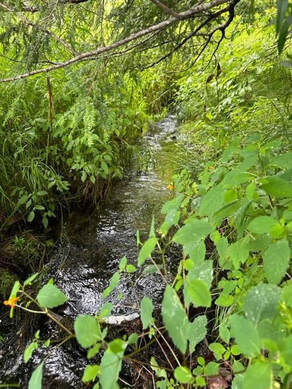
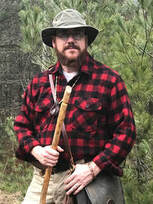
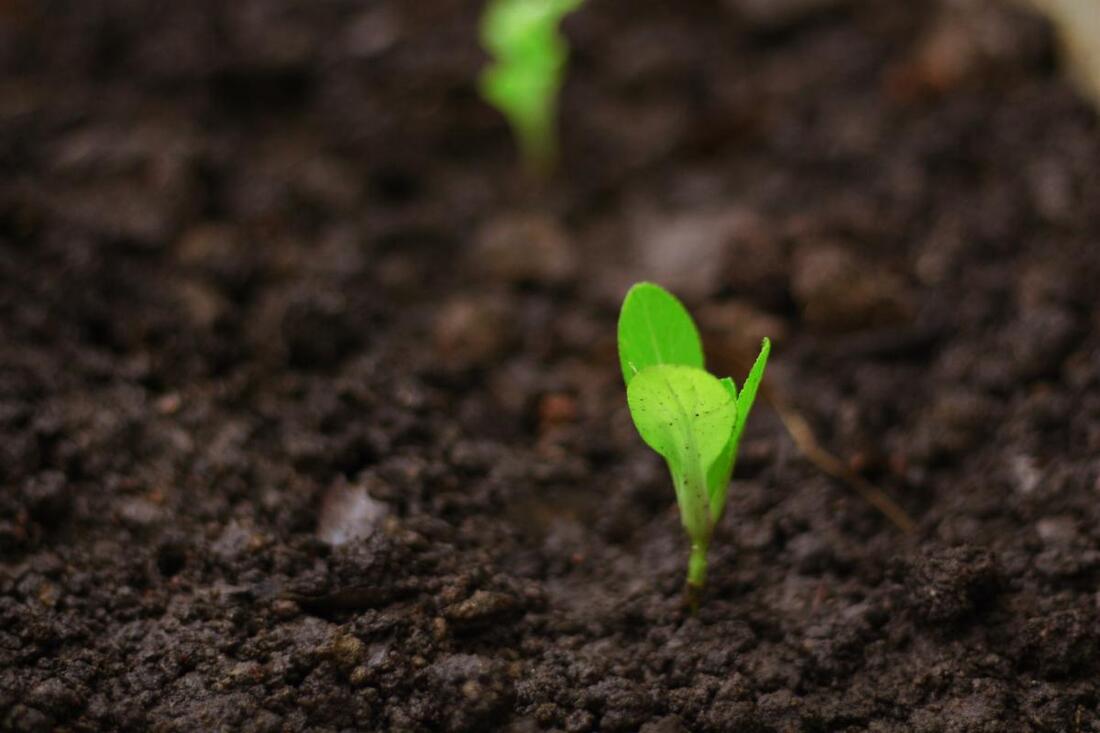

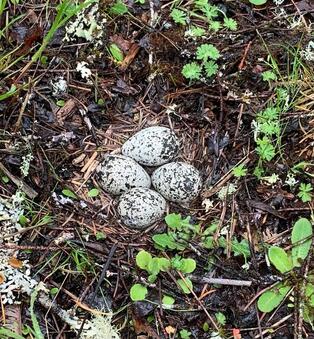


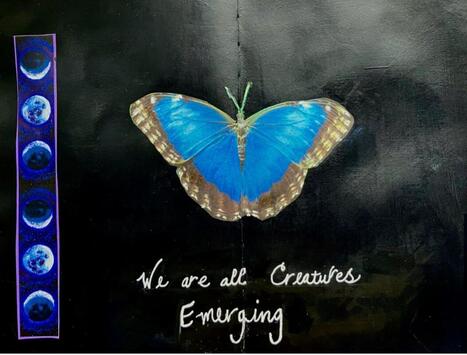
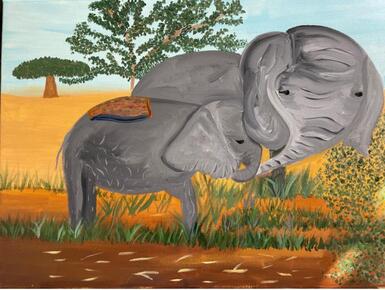
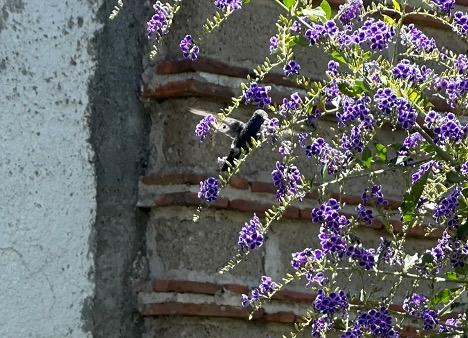
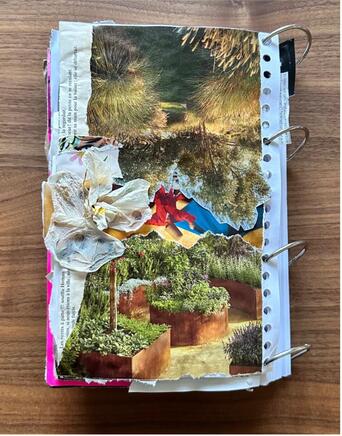
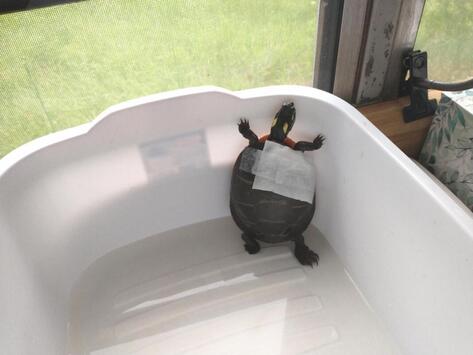
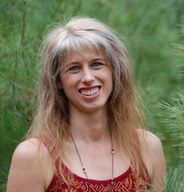
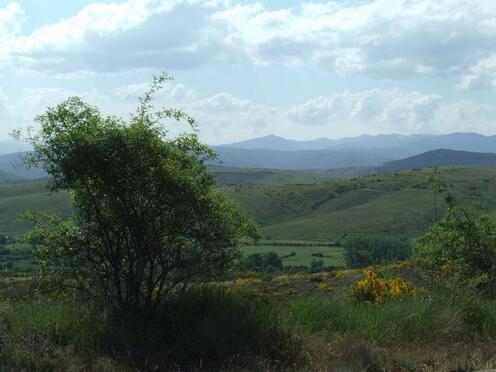
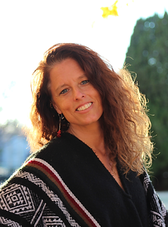
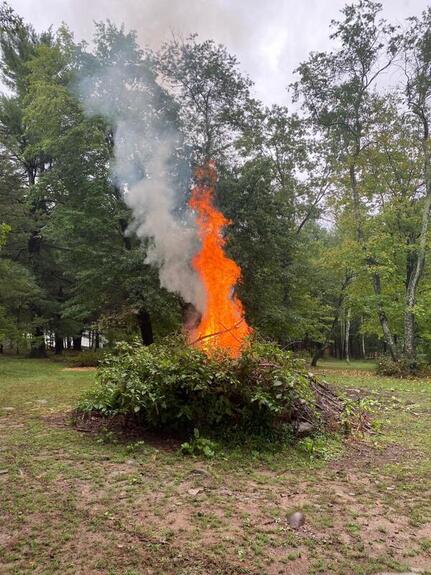
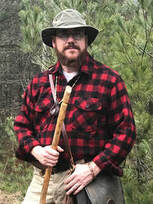
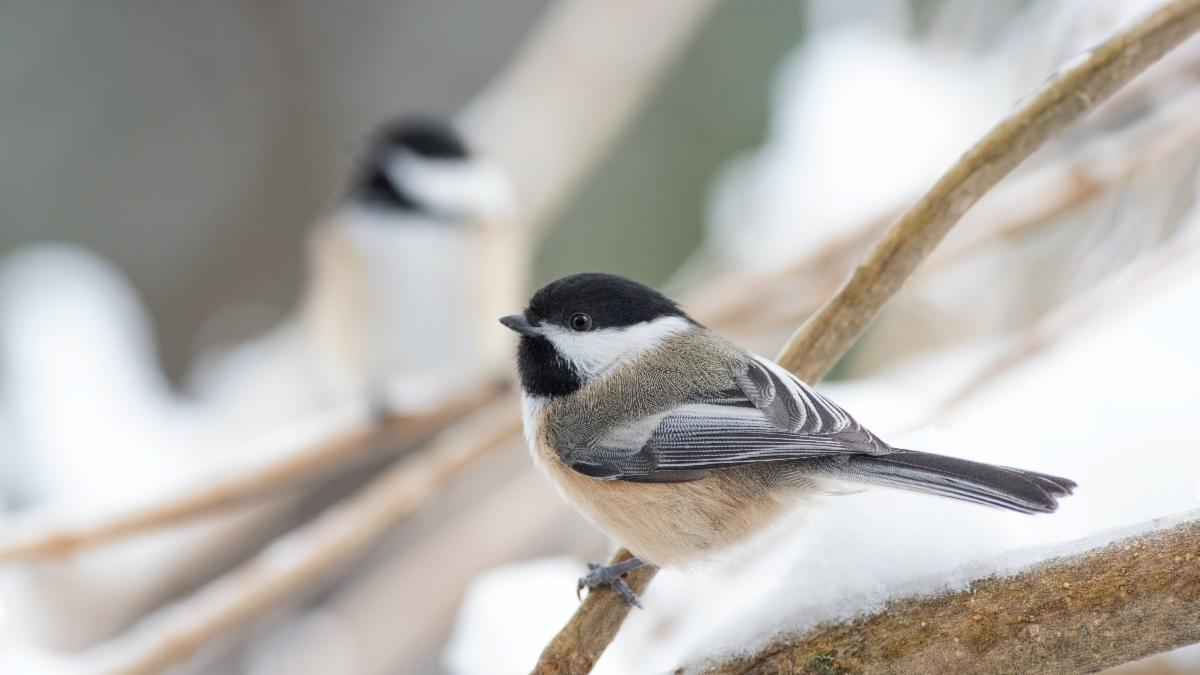
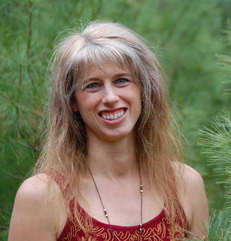
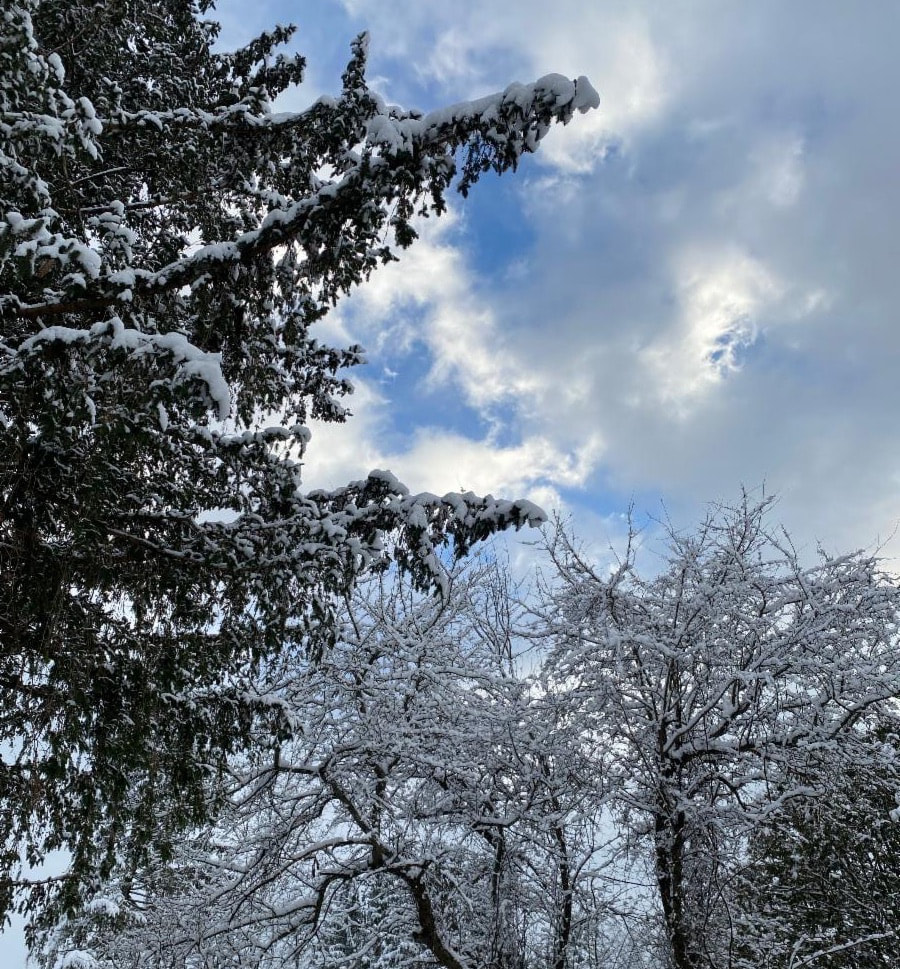
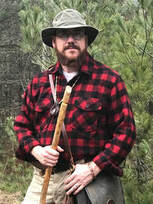
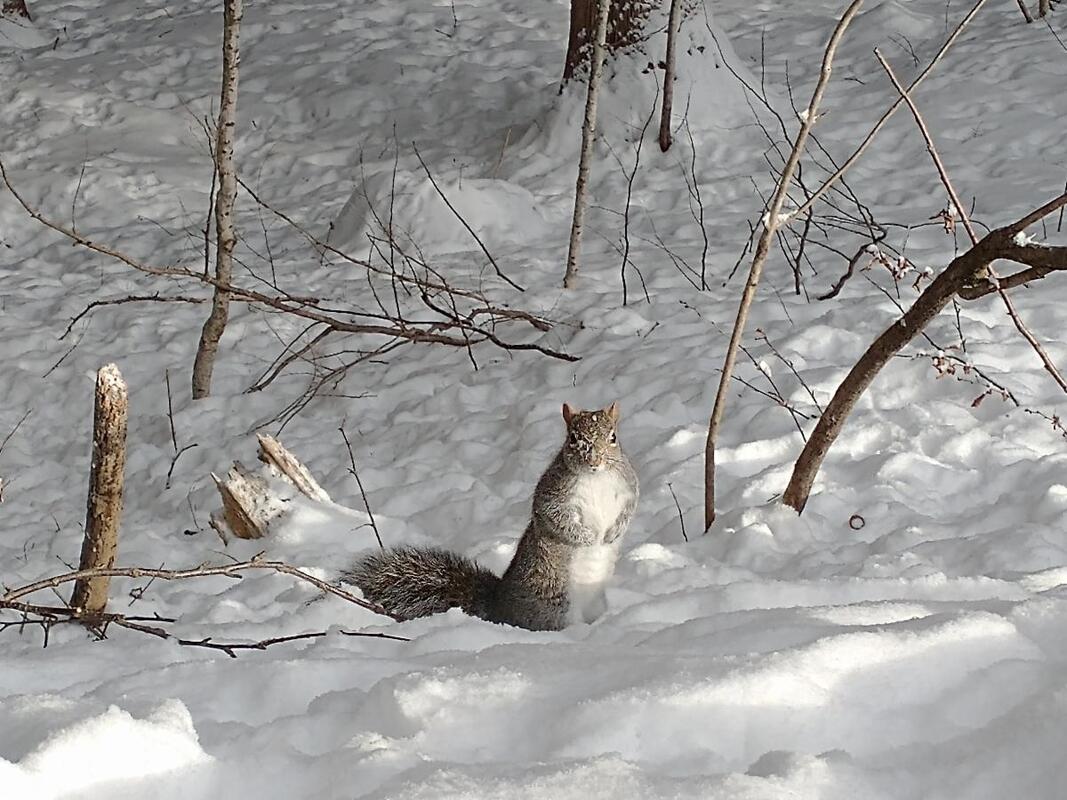
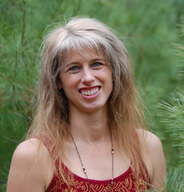
 RSS Feed
RSS Feed
